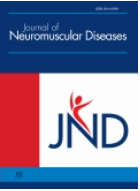 Spinal muscular atrophy (SMA) is the second genetically determined cause of childhood neuromuscular disease. There are three types of increasing severity (type I, II and III) depending on the age of onset and the maximum motor abilities acquired. Orthopedic and respiratory complications make the disease very serious, especially in the earliest and therefore the most serious forms (types I and II). The development of scoliosis is very frequent, including in type III, and raises some challenges in terms of management. The last few years have seen the implementation of new corrective surgical techniques, some less invasive.
Spinal muscular atrophy (SMA) is the second genetically determined cause of childhood neuromuscular disease. There are three types of increasing severity (type I, II and III) depending on the age of onset and the maximum motor abilities acquired. Orthopedic and respiratory complications make the disease very serious, especially in the earliest and therefore the most serious forms (types I and II). The development of scoliosis is very frequent, including in type III, and raises some challenges in terms of management. The last few years have seen the implementation of new corrective surgical techniques, some less invasive.
In an article published in 2020, American clinicians analyzed, in a prospective study, the clinical and radiographic data of twelve patients with ADM type II and five type III having undergone, on average around 10 years of age, an intervention corrective surgery of the spine.
Baseline HFMSE scores, generally used in the follow-up of SMA and compared here in pre- and post-surgery, worsened by several points in a lasting way in a majority of patients. Instrumentation that includes fixation to the pelvis reduces flexibility, limiting the ability for compensatory maneuvers. However, the authors do not question the beneficial interest of such surgery, but clinicians just have to be aware of its limits and warn families beforehand.
